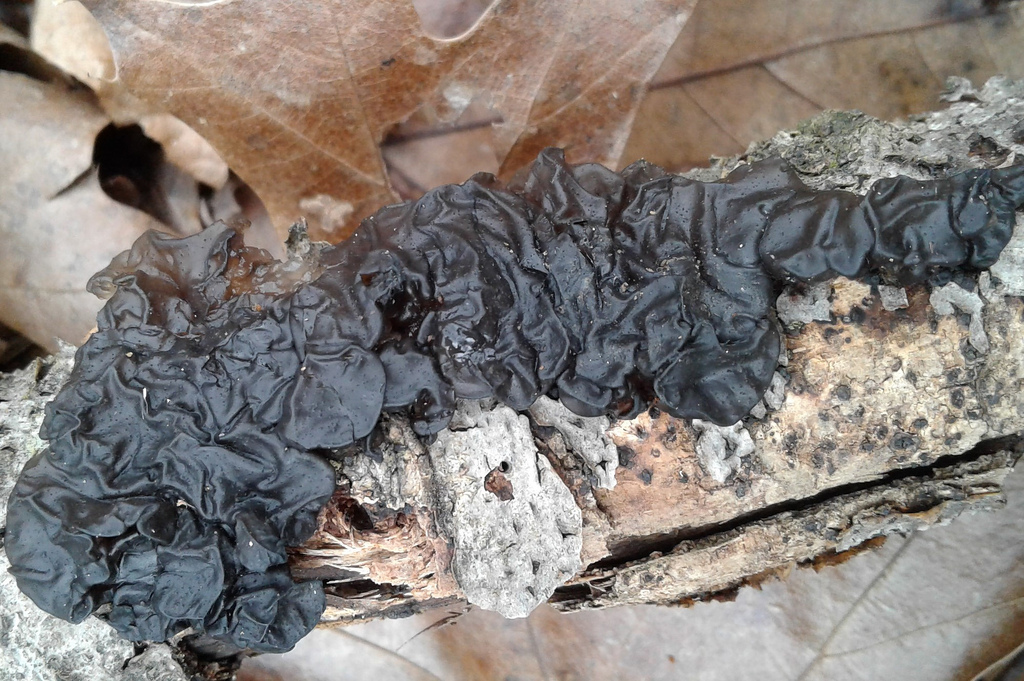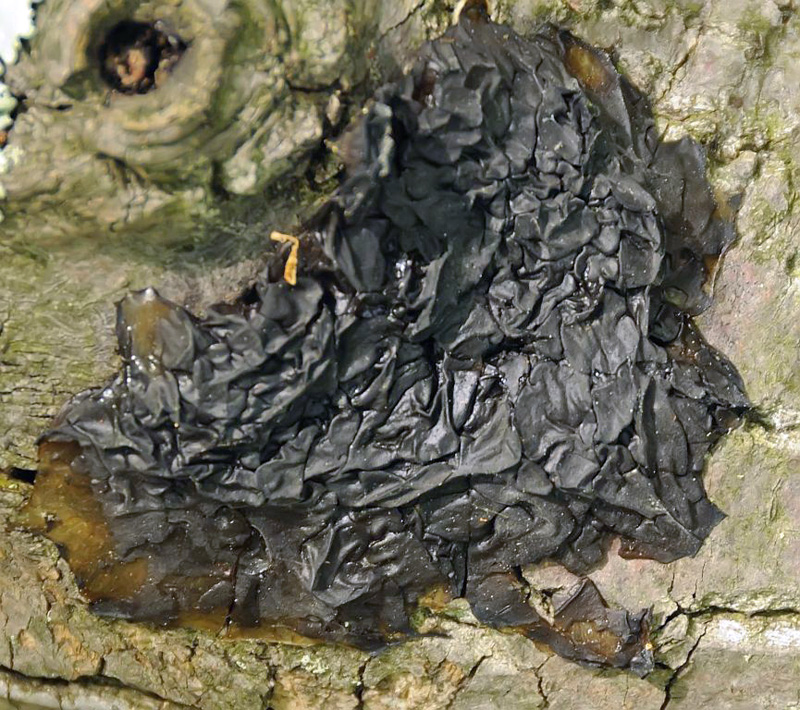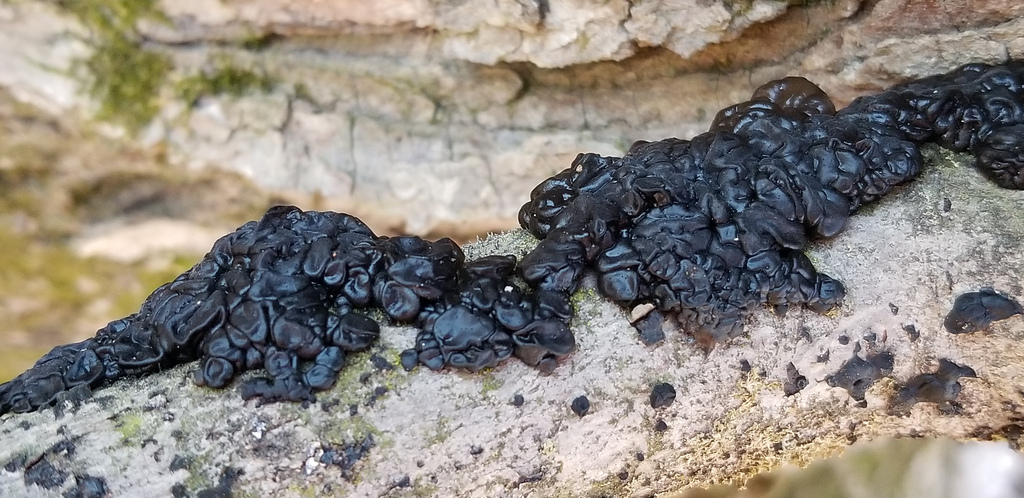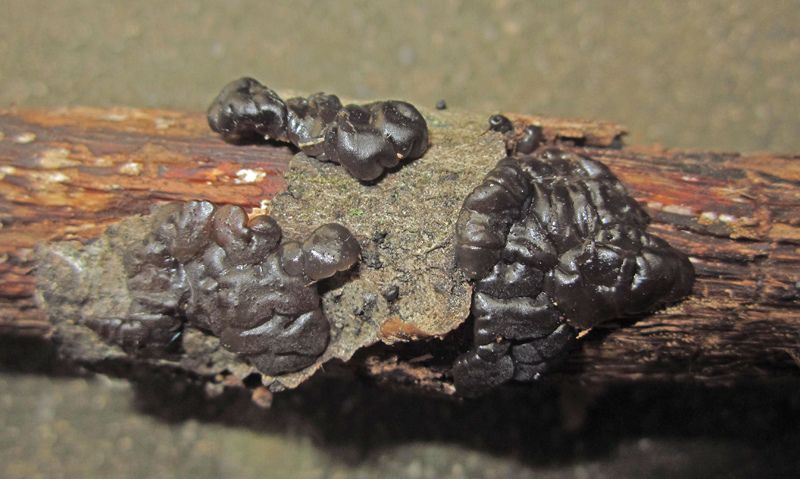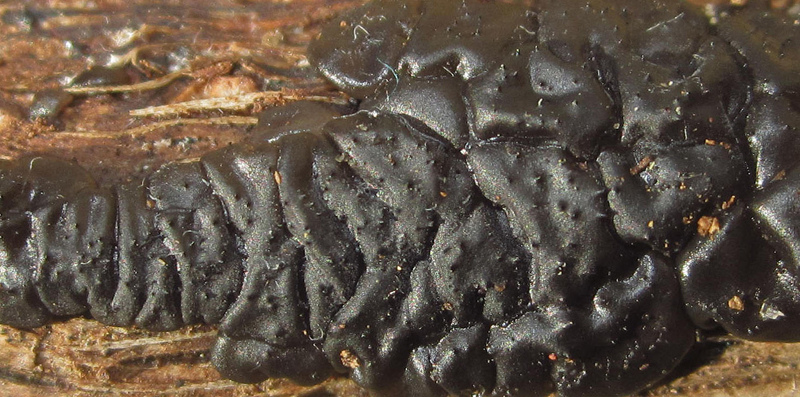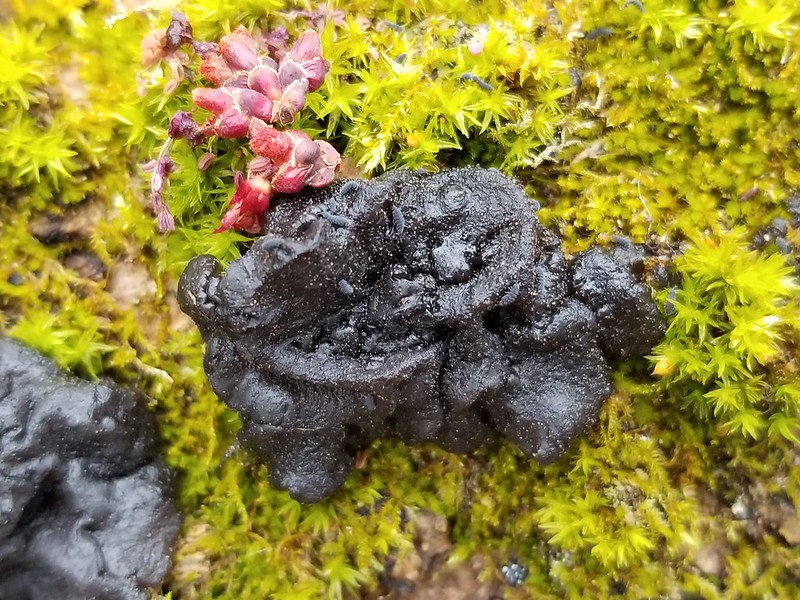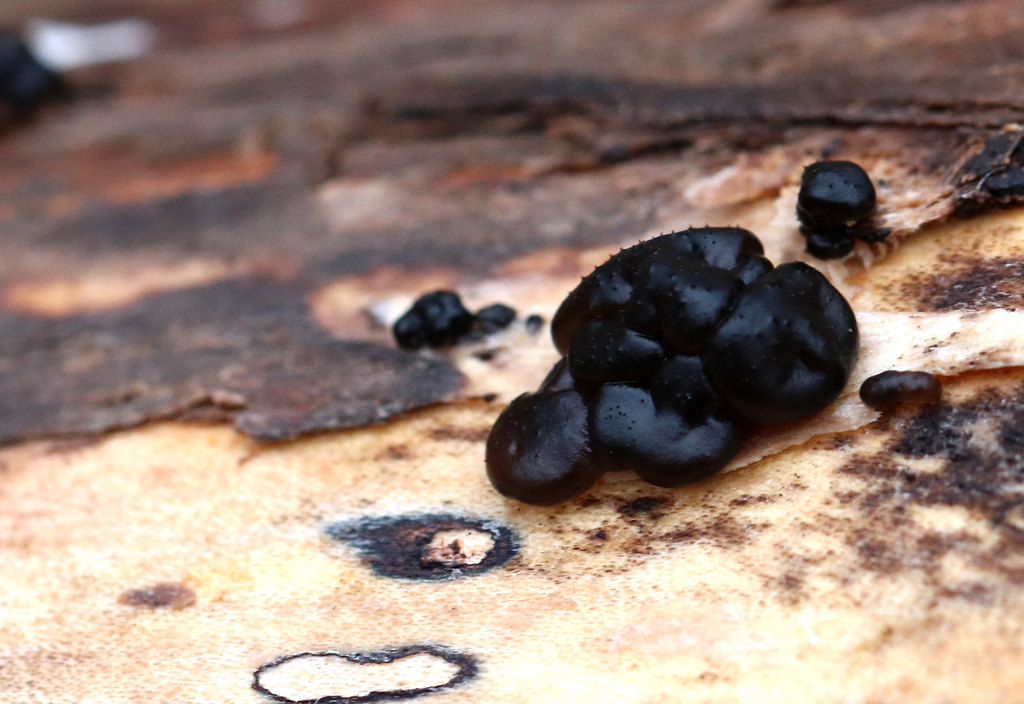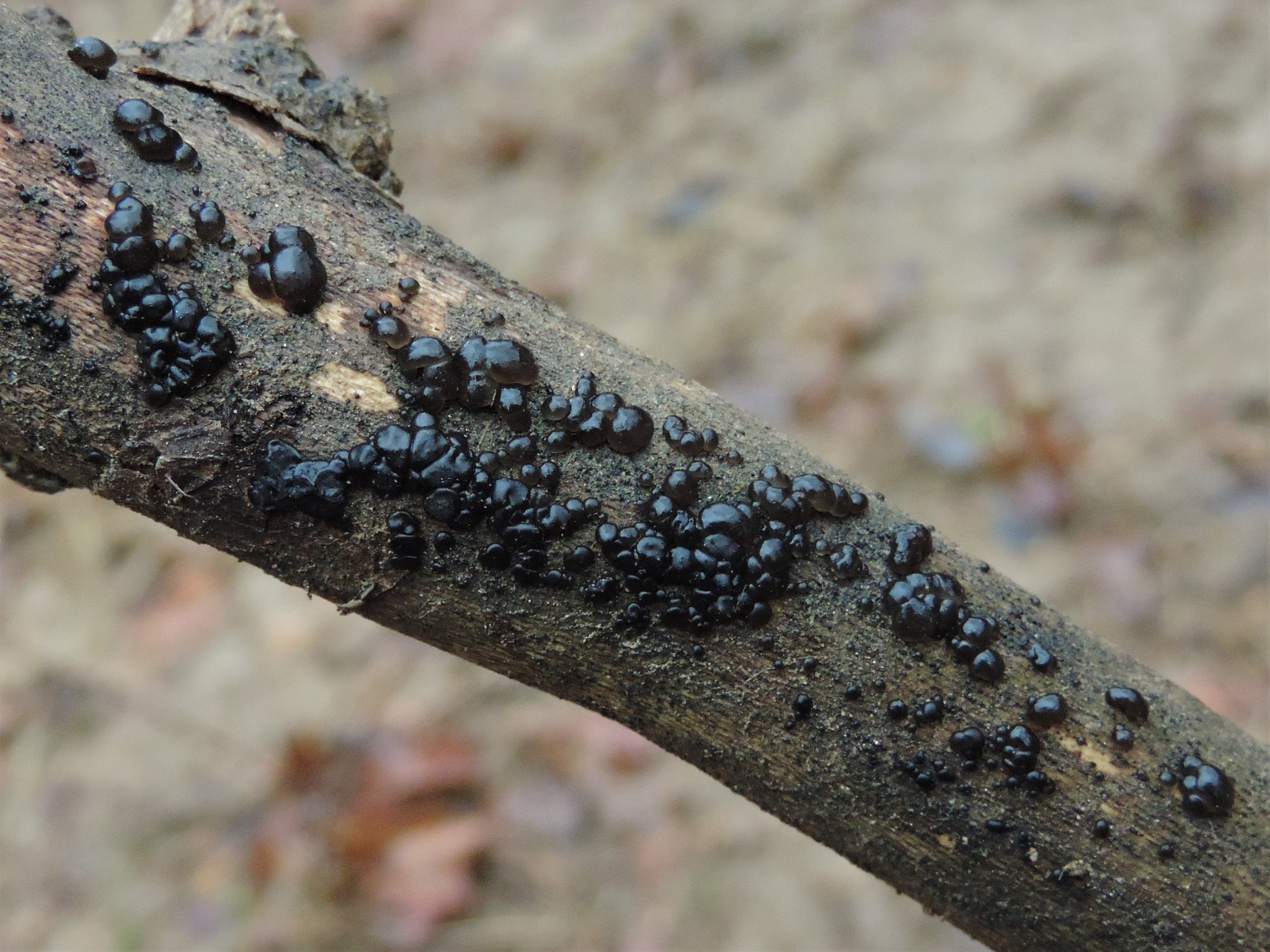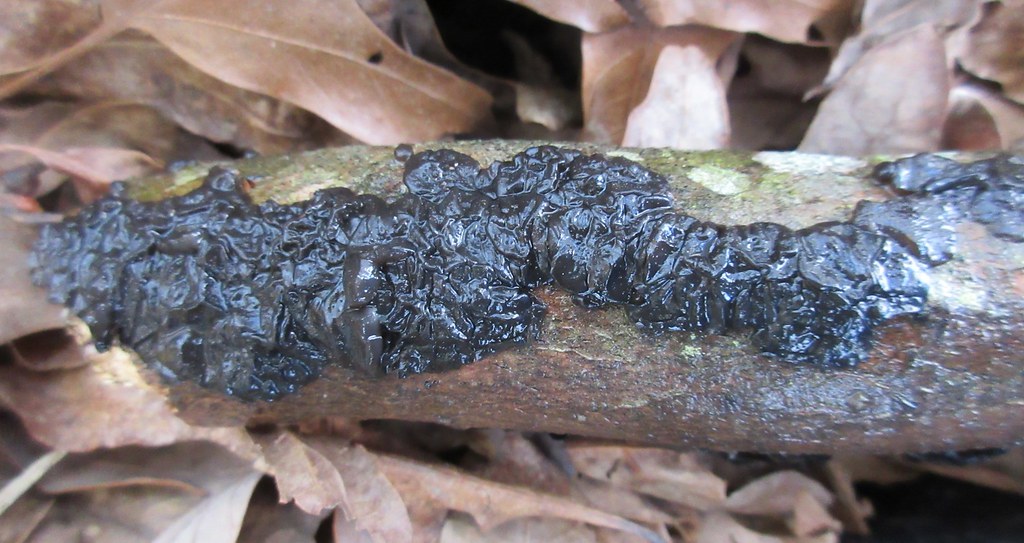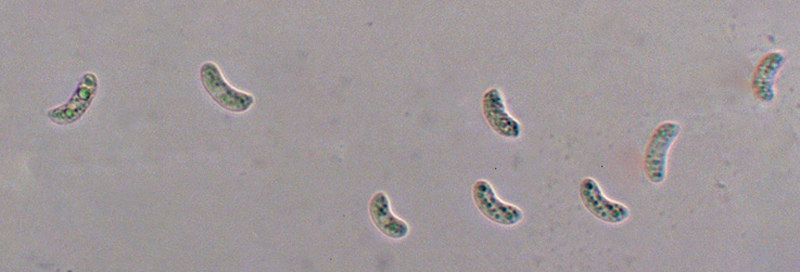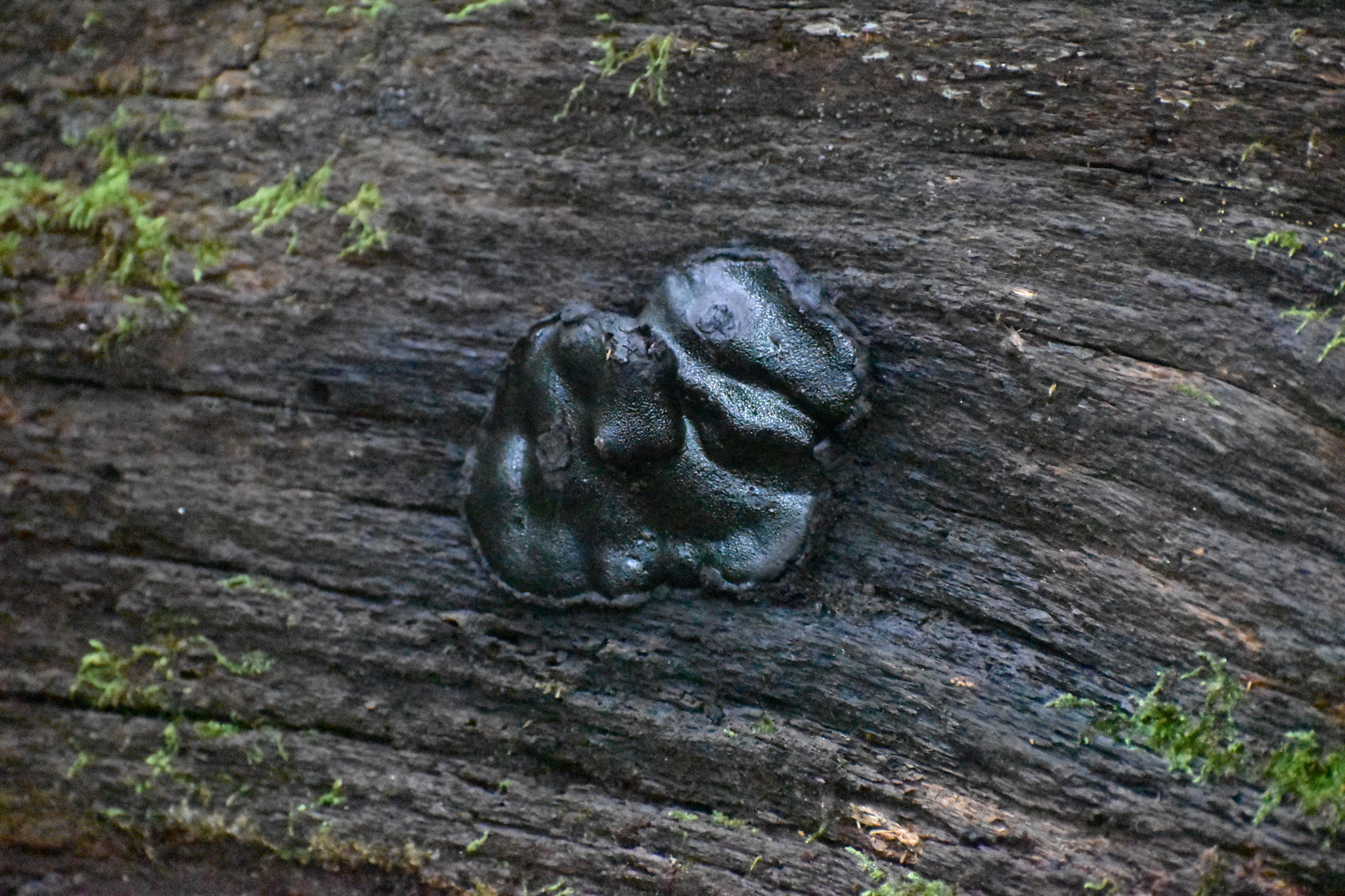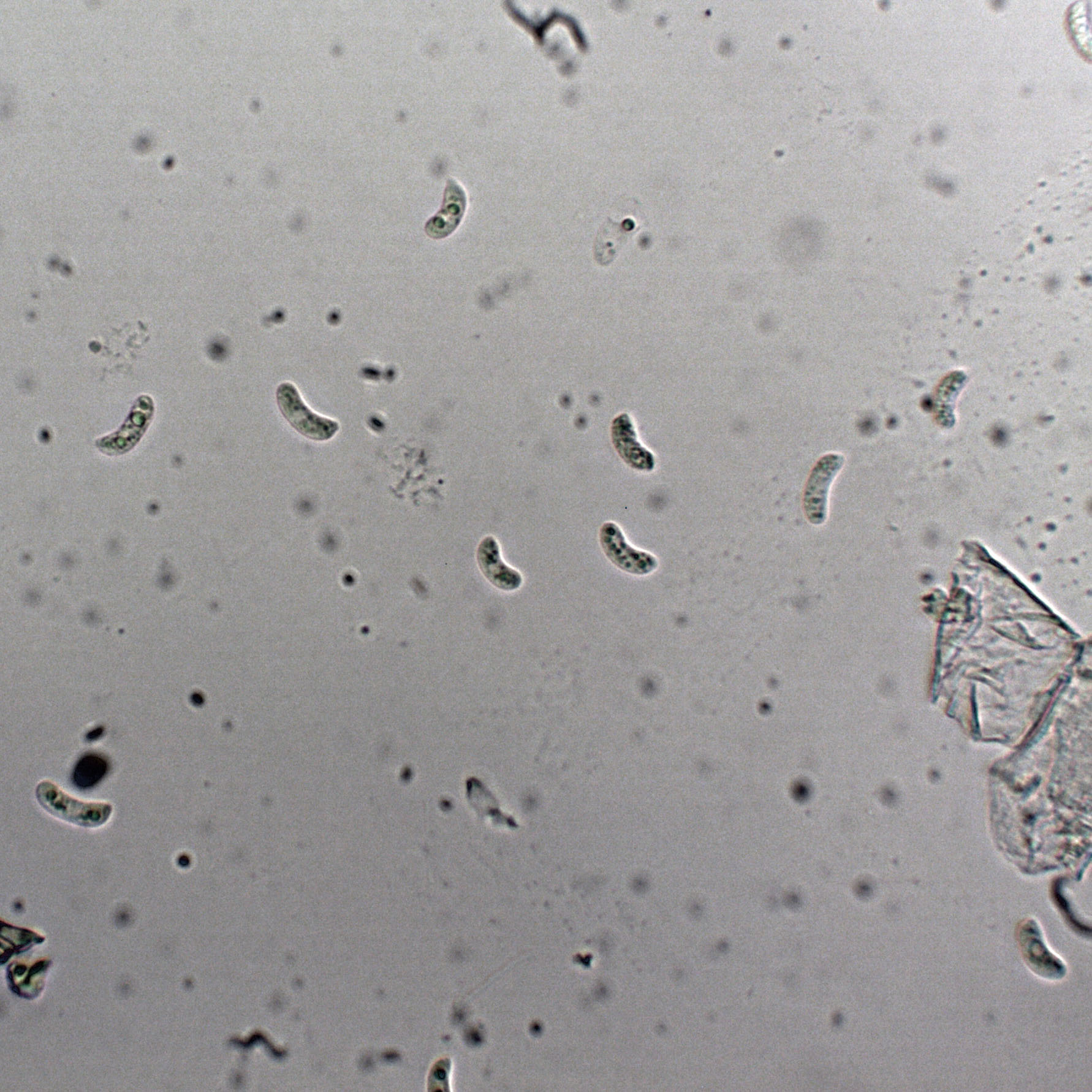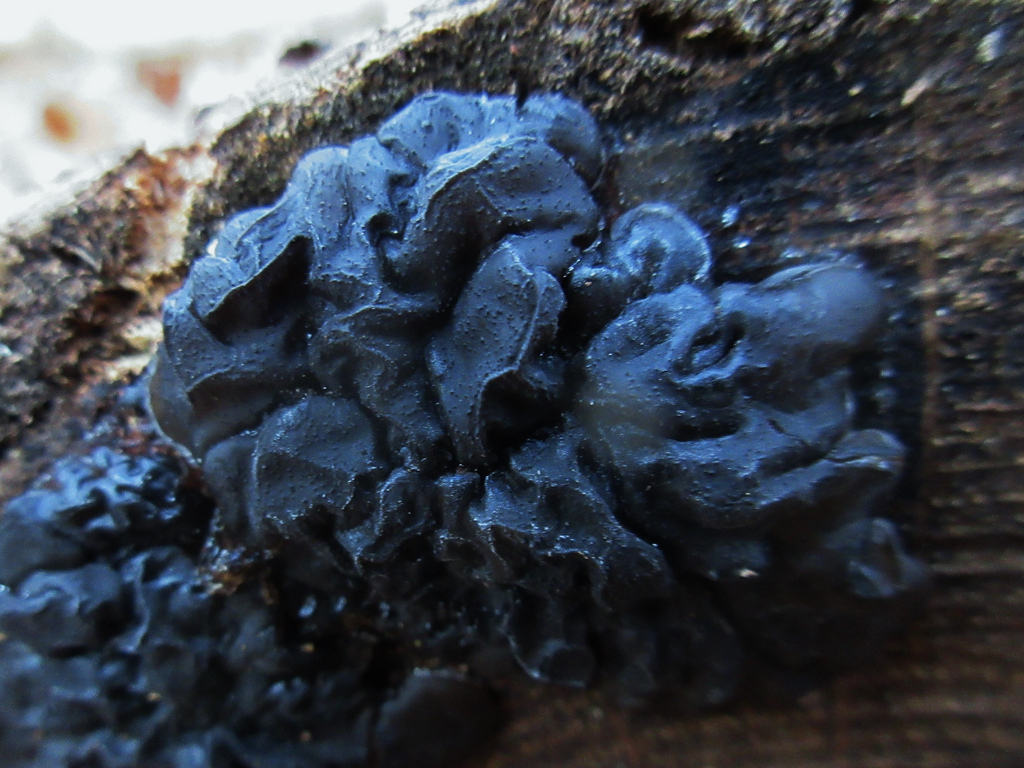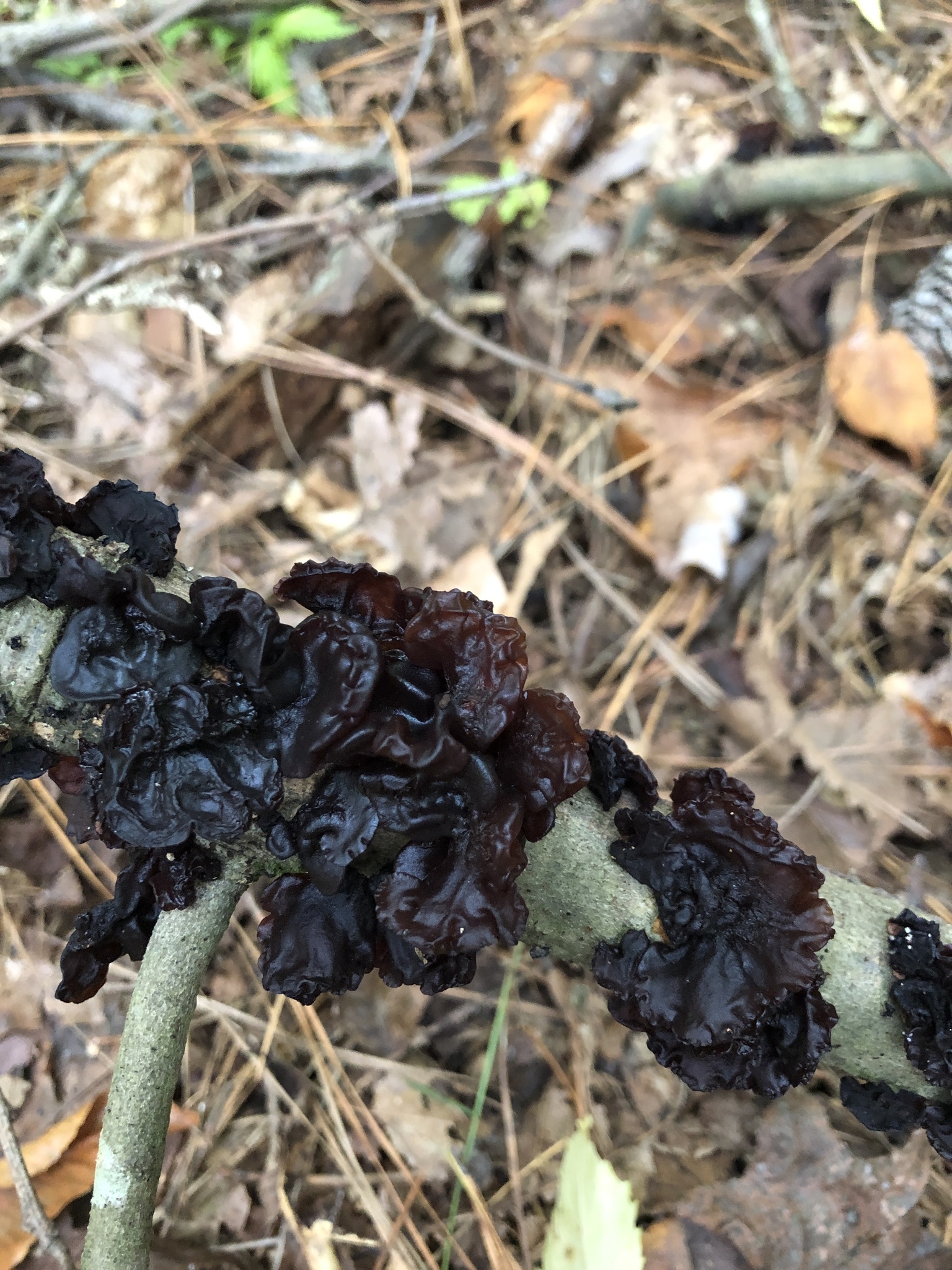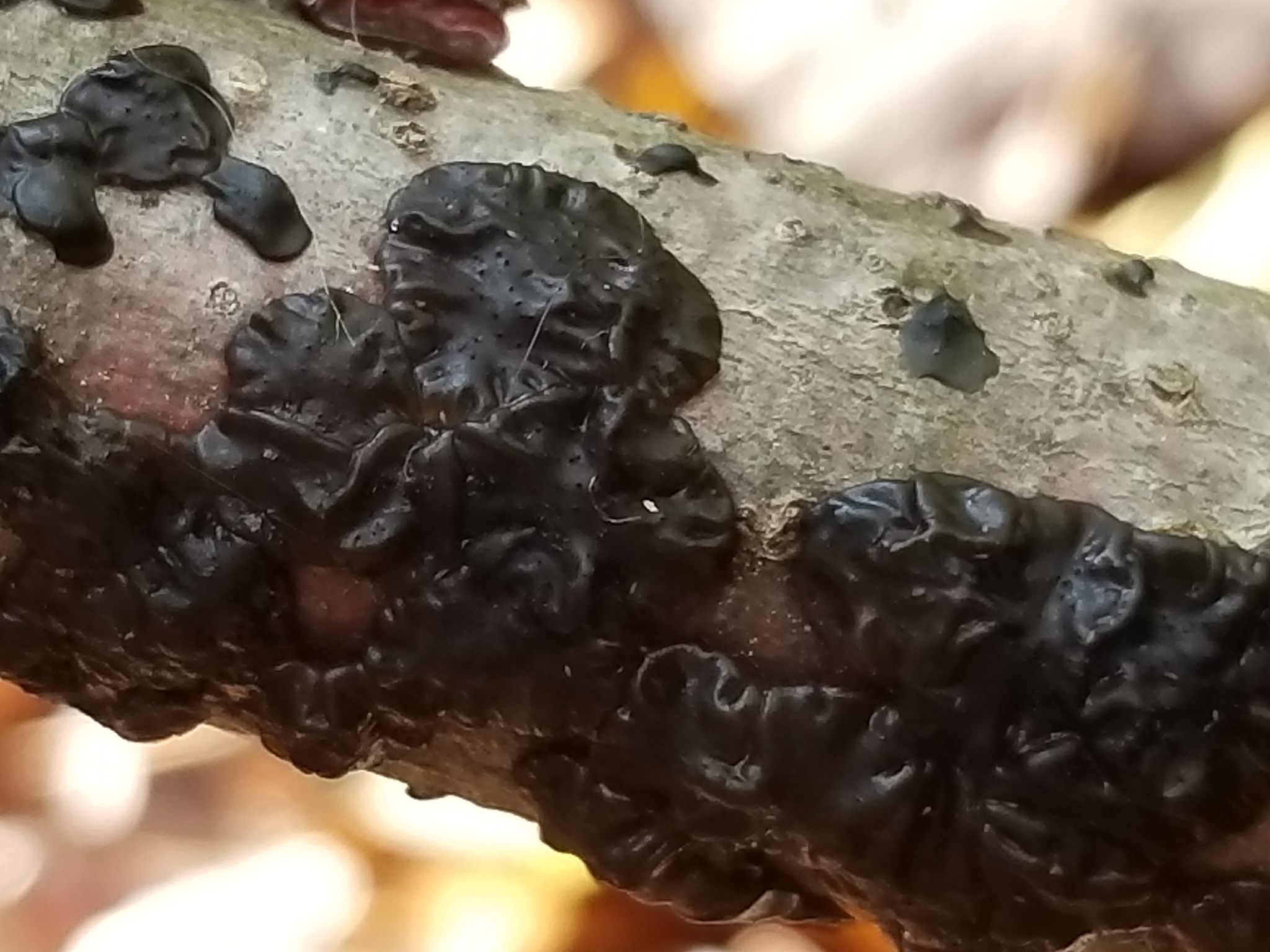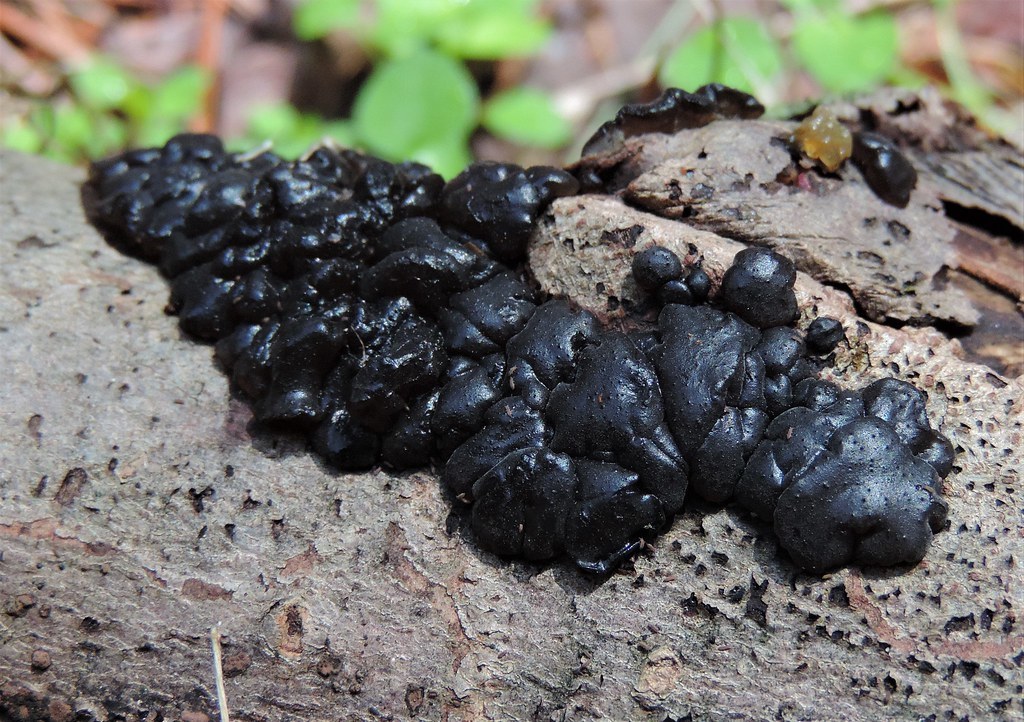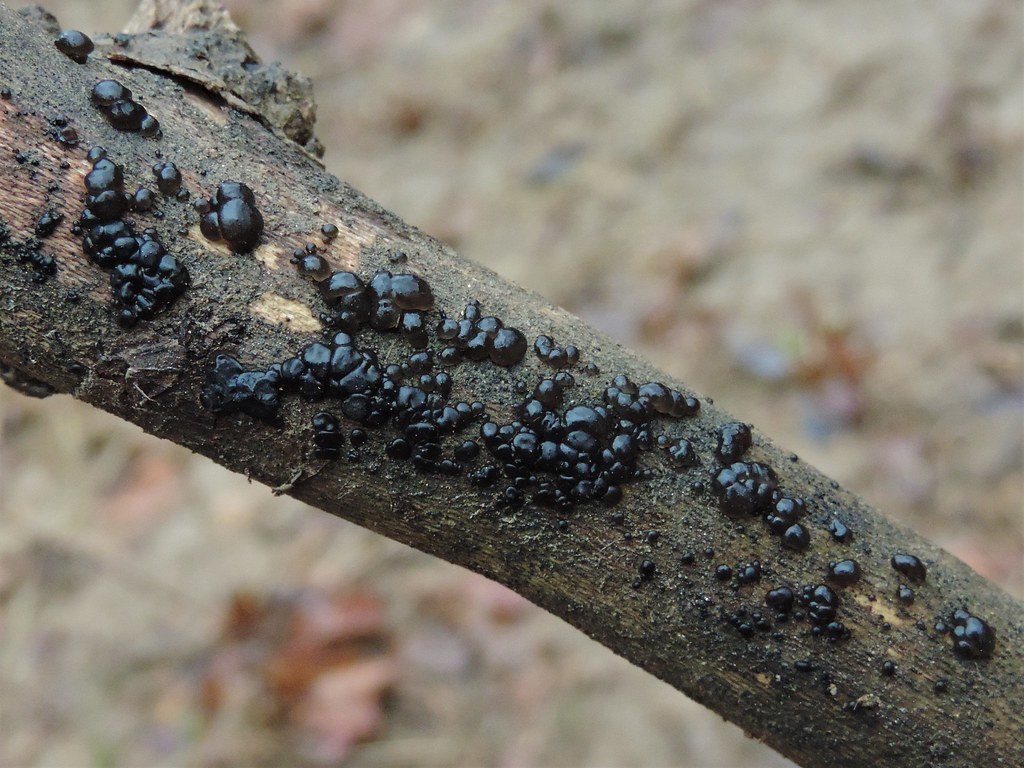Map Snapshot

















98 Records
Description
Fruiting body: Blackish; irregular shapes fused into a mass; shiny; flesh gelatinous; usually covered with peg-like warts (use a hand lens). Microscopically indistinguishable from E. nigricans; however, Woehrel and Light (2017, p. 107) state: fruiting bodies of E. glandulosa "nearly always retain their discrete identity," while E. nigricans coalesces into a black, wrinkled mass (J. Solem, pers. comm.).
Relationships
Found on hardwoods.
Seasonality Snapshot
Source: Wikipedia
| Exidia glandulosa | |
|---|---|

| |
| Scientific classification | |
| Domain: | Eukaryota |
| Kingdom: | Fungi |
| Division: | Basidiomycota |
| Class: | Agaricomycetes |
| Order: | Auriculariales |
| Family: | Auriculariaceae |
| Genus: | Exidia |
| Species: | E. glandulosa
|
| Binomial name | |
| Exidia glandulosa | |
| Synonyms | |
Exidia glandulosa is a species of fungus in the family Auriculariaceae. In the UK, it has the recommended English name of witch's butter.[1] In North America it has variously been called black witches' butter, black jelly roll,[2] or warty jelly fungus.[3] It is a common, wood-rotting species in Europe, typically growing on dead attached branches of oak. The gelatinous basidiocarps (fruit bodies) are up to 3 cm (1.2 in) wide, shiny, black and blister-like, and grow singly or in clusters. Its occurrence elsewhere is uncertain because of confusion with the related species, Exidia nigricans.
Taxonomy
[edit]The species was originally described from France as Tremella glandulosa by Bulliard in 1789.[4] It was subsequently placed in Exidia by Fries in 1822.[5] Fries, however, modified Bulliard's species concept to include a second, effused, coalescing species—the name Exidia glandulosa serving for both. This combined concept was used until Neuhoff separated the two species in 1936. Unfortunately, Neuhoff gave the name Exidia glandulosa to the effused species, adopting the name Exidia truncata for Bulliard's original species. This error was pointed out by Donk in 1966, who proposed the name Exidia plana for the effused species,[6] now replaced by Exidia nigricans.[7]
Molecular research has shown that Exidia glandulosa and E. nigricans, though similar, are distinct.[8]
Description
[edit]| Exidia glandulosa | |
|---|---|
| Smooth hymenium | |
| No distinct cap | |
| Hymenium attachment is irregular or not applicable | |
| Lacks a stipe | |
| Spore print is white | |
| Ecology is saprotrophic | |
| Edibility is unknown | |
Exidia glandulosa forms dark sepia to blackish, rubbery-gelatinous fruit bodies that are top-shaped (like an inverted cone) and around 3 cm (1.2 in) across (sometimes fusing into masses some 20 cm in length).[9] They are firm when fresh, but become lax and distorted with age or in wet weather. The fruit bodies occur singly or in small clusters. The upper, spore-bearing surface is shiny and dotted with small pimples or pegs. The undersurface is smooth and matt at first, but develops a dense covering of small, gelatinous spines. The fruit bodies are attached to the wood at the base. The spore print is white.[10] When the fruit bodies are dried they can shrink to form a flattened black crust.[3]
Microscopic characters
[edit]The microscopic characters are typical of the genus Exidia. The basidia are ellipsoid, septate, 15–25 by 8–13 μm. The spores are allantoid (sausage-shaped), with dimensions of 14–19 by 4.5–5.5 μm.[10]

Similar species
[edit]

Exidia glandulosa is frequently confused with Exidia nigricans. The two are similar, but E. nigricans produces button-shaped fruit bodies in clusters that quickly become deformed and coalesce, forming an effused, lobed mass that can be 10 cm (3.9 in) or more across. The two species are indistinguishable microscopically, but DNA research indicates they are distinct.[8]
The ascomycete Bulgaria inquinans forms similar, rubbery-gelatinous, blackish fruit bodies on oak. Their upper surfaces are entirely smooth, however, and they produce copious black (not white) spore prints, often leaving a black stain if wiped with the hand.[11]
Habitat and distribution
[edit]Exidia glandulosa is a wood-rotting species, typically found on dead attached branches of broadleaf trees, especially oak, occasionally hazel or beech. It is a pioneer species capable of colonizing living or recently dead wood. A study of the wood decay process in attached oak branches showed that E. glandulosa is a member of a community of eight basidiomycetous fungi consistently associated with the decay of dying branches on living trees. Specifically, its role is to disintegrate the tissue of the vascular cambium, which loosens the attached bark.[12] It persists for some while on fallen branches and logs. Fruit bodies are normally produced in the autumn and winter. Its global distribution is uncertain because of confusion with E. nigricans, but it is present in Europe at least.
Edibility
[edit]While nonpoisonous, one field guide says Exidia glandulosa is inedible,[13] though it has also been reported to be edible.[14]
References
[edit]- ^ Holden L. (2024). "English names for fungi". British Mycological Society. Retrieved 15 August 2024.
- ^ Arora D. (1986). Mushrooms Demystified: a Comprehensive Guide to the Fleshy Fungi. Berkeley, California: Ten Speed Press. pp. 672–73. ISBN 0-89815-169-4. Retrieved 2010-03-13.
- ^ a b McKnight VB, McKnight KH. (1987). A Field Guide to Mushrooms: North America. Boston: Houghton Mifflin. p. 66. ISBN 0-395-91090-0. Retrieved 2010-03-13.
- ^ Bulliard P. (1791). Histoire des champignons de la France. I (in French). Paris: l'auteur. p. 220. Retrieved 2010-03-13.
- ^ Fries EM. (1822). Systema Mycologicum (in Latin). Vol. 2. Lundae: Ex Officina Berlingiana. p. 224. Retrieved 2010-03-13.
- ^ Donk MA. (1966). "Check list of European hymenomycetous heterobasidiae". Persoonia. 4: 145–335.
- ^ Roberts P. (2009). "Exidia nigricans: a new and legitimate name for Exidia plana". Mycotaxon. 109: 219–20. doi:10.5248/109.219.
- ^ a b Weiss M, Oberwinkler F. (2001). "Phylogenetic relationships in Auriculariales and related groups – hypotheses derived from nuclear ribosomal DNA sequences". Mycological Research. 105 (4): 403–15. doi:10.1017/S095375620100363X.
- ^ Davis, R. Michael; Sommer, Robert; Menge, John A. (2012). Field Guide to Mushrooms of Western North America. Berkeley: University of California Press. p. 306. ISBN 978-0-520-95360-4. OCLC 797915861.
- ^ a b Breitenbach J, Kranzlin F. (1985). Fungi of Switzerland: Non Gilled Fungi: Heterobasidiomycetes, Aphyllophorales, Gastromycetes. Vol. 2. Mad River Press. p. 66. ISBN 978-0-916422-67-7. (as E. truncata)
- ^ Breitenbach J, Kranzlin F. (1984). Fungi of Switzerland: A contribution to the knowledge of the fungal flora of Switzerland. Vol. 1. Verlag Mykologia. p. 156. ISBN 978-3-85604-205-9.
- ^ Boddy L, Rayner ADM. (1982). "Ecological roles of Basidiomycetes forming decay communities in attached oak branches". New Phytologist. 93 (1): 77–88. doi:10.1111/j.1469-8137.1983.tb02694.x. JSTOR 2431897.
- ^ Miller Jr., Orson K.; Miller, Hope H. (2006). North American Mushrooms: A Field Guide to Edible and Inedible Fungi. Guilford, CN: FalconGuides. p. 497. ISBN 978-0-7627-3109-1.
- ^ Alan E. Besette; et al. (2007). Mushrooms of the Southeastern United States. Syracuse University Press. p. 305. ISBN 9780815631125. Retrieved 2014-01-19.
External links
[edit]- MushroomObserver Images
